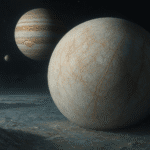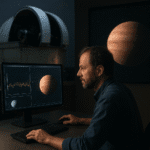Speculation about extraterrestrial life has long captured the human imagination, blending rigorous scientific inquiry with the untamed realm of the unknown. As we peer into the cosmos, the question arises: Could aliens be living among us? This exploration delves into the foundations of the idea, the evidence gathered so far, and the profound implications for humanity’s understanding of its place in the universe.
Theoretical Foundations of Hidden Civilizations
The concept of alien civilizations living undetected on Earth encompasses a range of theories that challenge conventional assumptions. One of the most compelling is the hypothesis of non-intervention, sometimes referred to as a cosmic “zoo” principle, suggesting that advanced intelligences may observe life on our planet without revealing themselves. This notion rests on several key pillars:
- Technological Disparity: Extraterrestrial societies could possess technologies so far beyond our comprehension that their presence goes unnoticed, cloaked by sophisticated stealth mechanisms.
- Ethical Restraint: Highly evolved beings might adhere to a universal code preventing interference in less developed ecosystems, much like human wildlife preserves.
- Parallel Evolution: On Earth, cryptic ecosystems flourish in hidden niches—deep oceans, subglacial lakes, and subterranean networks. Could a similar phenomenon occur with alien species adapted to unique terrestrial environments?
Adaptive Camouflage and Biological Stealth
Nature offers countless examples of organisms employing camouflage and mimicry. From chameleons that shift hues to cuttlefish that project complex patterns, the biological toolbox for stealth is extensive. If extraterrestrial life forms evolved under intense predation or competition, they might employ an advanced variation of these adaptations. Consider the following possibilities:
- Genetic integration with native species, producing hybrid forms that elude detection.
- Infrared or ultrasonic cloaking, rendering them invisible to standard human senses and instrumentation.
- Biochemical signatures so subtle they blend seamlessly with Earth’s biosphere.
Evidence and Observational Challenges
Despite centuries of anecdotal reports—ranging from cryptid sightings to unexplained aerial phenomena—definitive proof remains elusive. A major obstacle lies in distinguishing between human-made artifacts, psychological hallucinations, and genuinely anomalous events. Research initiatives have attempted to catalog and analyze data, highlighting several areas of interest:
- Unidentified Aerial Phenomena (UAP): Military and civilian reports describe objects exhibiting extraordinary maneuvers, speeds, and forms of propulsion.
- Archaeological Anomalies: Ruins and artifacts that challenge historical timelines or defy conventional explanation.
- Biological Oddities: Rare genetic mutations and unexplained medical conditions occasionally fuel speculation about non-human influences.
Detection Limitations
Current scientific instruments are optimized for known parameters: electromagnetic signals, familiar chemical spectra, and gravitational effects. However, if an alien presence employs alternative modalities of communication or sustains itself through unconventional energy sources, our detection frameworks may prove inadequate. Consider:
- Quantum Communication channels impervious to eavesdropping by classical sensors.
- Energy harvesting from dark matter or zero-point fluctuations, leaving no visible footprint in our measurements.
- Time-dilated or multidimensional existences that transcend standard spacetime boundaries.
Another layer of complexity involves human cognition and societal biases. Witness testimonies are filtered through perception, memory, and cultural context. Scientific committees often require reproducibility and peer review, criteria that fleeting or non-repeatable events cannot satisfy. This gap between credible eyewitness accounts and rigorous validation keeps many reports locked in limbo.
Implications and Future Research
Entertaining the notion that alien entities could already share our planet bears profound consequences for multiple disciplines:
- Philosophy and Ethics: How would humanity redefine concepts of personhood, rights, and moral responsibility if extraterrestrial intelligences were recognized?
- Biology and Medicine: New forms of life or exotic chemistries could revolutionize our understanding of physiology, genetics, and disease.
- Technology and Engineering: Reverse-engineering alien innovations might propel us into a new industrial age, transforming energy production, materials science, and transport.
Strategic Approaches to Investigation
To advance this inquiry, researchers advocate a multifaceted strategy:
- Deployment of interdisciplinary teams combining astrophysicists, biologists, and data scientists to develop innovative detection methods.
- Expansion of global sensor networks covering electromagnetic, gravitational, and quantum domains.
- Openness to unconventional data sources, including civilian reports, historical archives, and rare geological formations.
- Ethical frameworks to govern potential contact scenarios, ensuring transparency and global cooperation.
In confronting the possibility that we are not alone—and may not have been for millennia—we stand at the threshold of a paradigm shift. The quest to uncover hidden civilizations tests our ingenuity and challenges our perceptions of reality. By refining our instruments, broadening our perspectives, and embracing the unknown, we may one day lift the veil on one of humanity’s greatest mysteries: the secret visitors that could be living among us.










